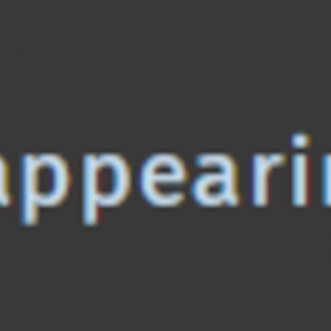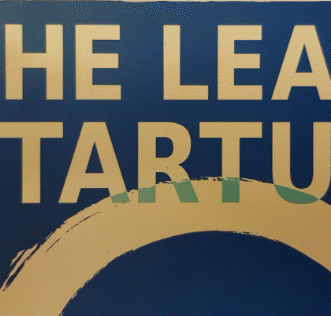
The Disappearing Boss – a newsletter
Issue 1 of The Disappearing Boss goes out this Sunday.

Issue 1 of The Disappearing Boss goes out this Sunday.

I’m a big fan of ‘The Lean Startup’, which I’d sum up as follows:
“The job of a startup is not to make money. It’s to find out what the market really wants.”
In other words, starting a business is about testing, refining and re-testing until you find what delivers real value, and so makes you money.
The trouble is, this can take years. There’s no shame in that. It’s just that most of us do this in an undocumented and somewhat unconscious way, internalising our findings as we go.
This means that when the time comes to expand our capacity, to meet the demand we’ve identified and finally start making the money, we struggle to communicate this vital information – who we are for, what we promise them, and how we deliver on that – to the people we need to work with, and that can lead to stunted growth.
The first step to remedying that is consciousness, which is why The Lean Startup is such a help. But what about after startup?
Here’s my solution:
Purposely design your business as a system for making and keeping promises, and improving how you do that:

That way, everyone involved in your business can stay conscious. Even after you’ve gone.

I spent quite a bit of my early career being called an analyst – someone who resolves or separates things into its elements or constituent parts.
In reality, like all of us, I’m mostly a synthesist. Putting thoughts, information, ideas, anecdotes, experiences together to make a whole – a model of the world that is coherent, at least to me, hopefully to others too.
When it comes to work, here are some of the ideas (axioms? premises? prejudices?) I grapple with, trying to synthesise a useful model of what it means to scale successfully as a business:
I’m not there yet with my coherent model, but I feel like I am getting there, and I’m enjoying the process.
What would you add to/remove from my list?

I learned a new concept today: ‘hegemonic narrative’. In plain English, a ‘dominant story’ about why things are the way they are.
Dominant because more or less everyone subscribes to it.
Story because it’s made up.
In fact human history could be said to be one long sequence of hegemonic narratives, each one displacing the previous one, not necessarily for the better. Often benefiting one group of people over others. Beneficiaries therefore have an incentive to keep their story dominant.
They are psychologically useful, because they help us live with contradictions. But they are nevertheless made up.
Much better to try and resolve the contradictions, and create a story that works well for everyone.
The good news is that inside your company at least, you are free to do just that.
For a long, but very interesting article on how such stories work, check out this article: “Explaining the Persistence of Gender Inequality: The Work–family Narrative as a Social Defense against the 24/7 Work Culture“. It’s a fascinating read.

I’ve met hundreds of small business owners, but I’ve yet to meet one who set out to be a Boss. Or at least a Boss of more than one person.
We embrace the challenge of starting a business, of finding customers, but we become Bosses reluctantly, sometimes half-heartedly, not always effectively.
Sometimes the experience of being the Boss of other people is so painful we joyfully go back to being the Boss of just ourself.
The trouble with that of course, is that the potential to create ever more value disappears along with the role we dislike so much.
There is another way to disappear as a Boss.
Instead of walking away, make yourself blend in. Enable your people to act more like Bosses, more like you.
After that it’s the more the merrier.
If you’d like to learn more about how, there’s a little welcome treat from me: Sign up for The Disappearing Boss Newsletter

Swarms look like an attractive option for decentralisation. After all, “Social insects work without supervision. In fact, their teamwork is largely self-organized, and coordination arises from the different interactions among individuals in the colony. Although these interactions might be primitive (one ant merely following the trail left by another, for instance), taken together they result in efficient solutions to difficult problems (such as finding the shortest route to a food source among myriad possible paths). The collective behavior that emerges from a group of social insects has been dubbed ‘swarm intelligence.'” (Corporate Rebels blog ‘Reinventing work‘)
As you know, I’m all for self-organisation, but for me it has to emerge from autonomy and a shared purpose. Ant colonies work through programming. Individual ants don’t get much say. I’d rather be a goose.
A different kind of swarming showed up this week around GameStop shares. Bottom-up collaboration between individuals.
The queen ants of Wall St. didn’t like it at all.

Let’s look at the human body. Simpler, less tightly-coupled joints are held in place by muscle and cartilage, combining rigidity and strength with flexibility and adaptability. Although there is a ‘standard’ bone shape, tolerances are high, accommodating a wide range of variation in components – both across a population and within a single individual. Growth is allowed for.
At the same time, possibilities are constrained by the surrounding muscles. If there is too much play in a joint, strengthening muscles will help. If there is too little play, stretching and loosening them will allow more movement. Remediation is possible without taking anything apart, or even stopping – all that’s needed to keep things in good order is a healthy variety of movement.
Perhaps this is the sweet spot between machine and ecosystem we should aim for in a business?

Step 2 of capturing a Business Process is to work out where it really starts.
A good rule of thumb is to think about where the ‘thing’ you’re dealing with – the ‘Noun’ in your process’s name – gets created, from the perspective of the business. These are good questions to ask:
You can ask similar questions to find where your process really ends:
It’s helpful to think about the process from its real beginning to its real end, because that’s how many opportunities for improvement can be identified, without having to go to the trouble of documenting the entire thing first. It gives you a shortcut, if you like.

Often, when we think about delegation, we’re thinking about merely handing over execution to someone else. We’ve already worked out what needs to be done, all they have to do is reproduce that. This somewhat mechanical form of delegation works well for really simple and generic tasks such as answering the phone, booking meetings, or filling in forms, or even for generic functions such as preparing annual accounts, fulfilment, distribution, even marketing.
But for what really weighs down a business owner, delegating execution doesn’t help much.
I remember my mum telling me, when as a child I offered to go shopping for her “The shopping is the least of my worries – I still have to think about what we’re going to eat, plan the meals, and write out the list. That’s the hard bit.”
What we really want to be delegating is the thinking, the decision making – in other words, the management. And that’s hard, because it means giving up power, entrusting business outcomes to other people. It means devolution.
But devolution is what really pays off. If my siblings and I had all taken turns to ‘manage’ the household, or taken responsibility for different parts of it, I’m sure that our family horizons and opportunities would have been broadened. 9 heads – even childish ones – are always better than 1.
The good news is that as business owners we have an advantage over mum, in that we’re dealing with adults we’ve selected for shared values, principles and beliefs. Who will welcome the ability to step up and lead.
Especially if given a score to follow while they (and you) get used to the idea.

I love it when somebody else finds ways to say things better than I can. Here’s a great post from Corporate Rebels exploring how 2 very different companies found similar ways to turnaround and then grow:
3 Principles To Run A Company Sensibly
“both were motivated to adopt their unique methodologies to rescue the struggling companies they were leading. They wanted to save the jobs of people in their organizations. They thought this could be achieved by giving all an understanding of how the businesses were run—and then involve them in improving them. Their way of saving jobs became a new way to create jobs. These new jobs created new wealth. This wealth, was then shared with those who created it in the first place: all those in the company.”
In other words, they created a virtuous flywheel that didn’t depend on the bosses.
Sounds sensible to me. Flywheels get going faster when everyone pushes in the same direction.
You can sign up here: https://mailchi.mp/b551379847f0/sign-up-for-the-disappearing-boss-newsletter
Or here: https://gibbsandpartners.com/subscribe/